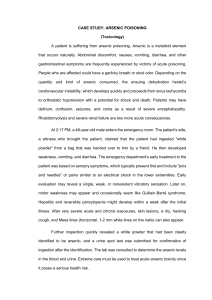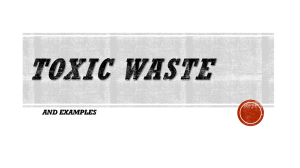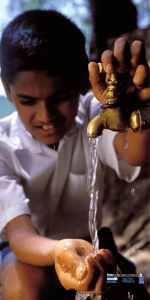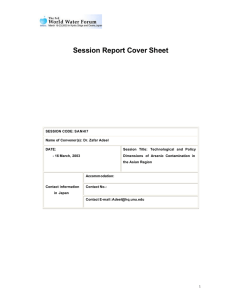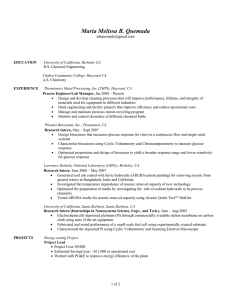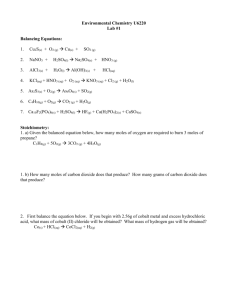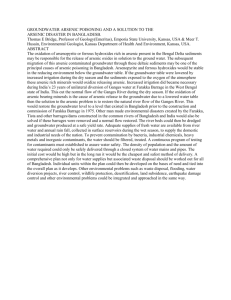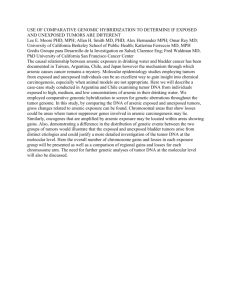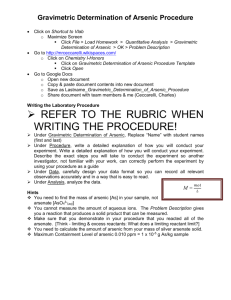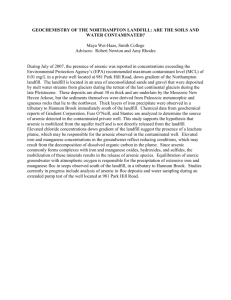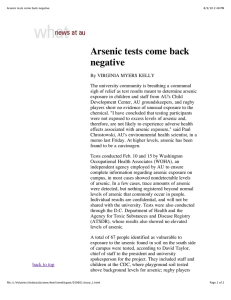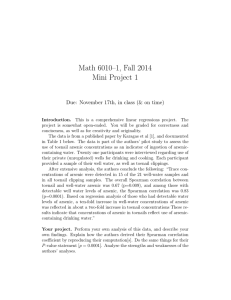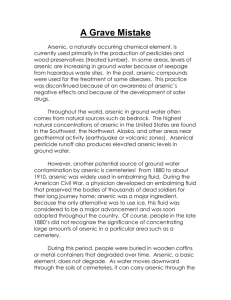management of arsenic poisoning
advertisement
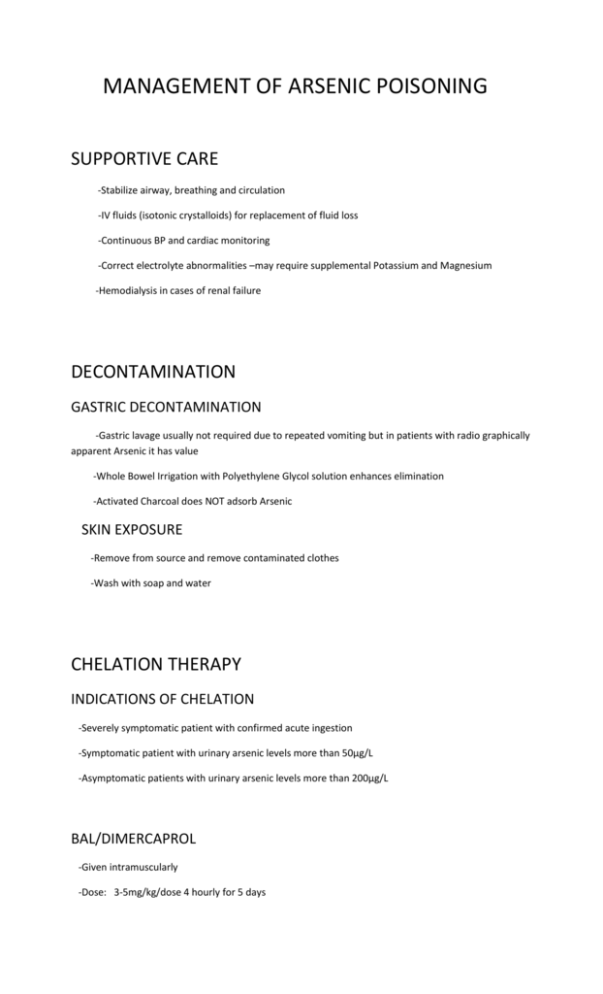
MANAGEMENT OF ARSENIC POISONING SUPPORTIVE CARE -Stabilize airway, breathing and circulation -IV fluids (isotonic crystalloids) for replacement of fluid loss -Continuous BP and cardiac monitoring -Correct electrolyte abnormalities –may require supplemental Potassium and Magnesium -Hemodialysis in cases of renal failure DECONTAMINATION GASTRIC DECONTAMINATION -Gastric lavage usually not required due to repeated vomiting but in patients with radio graphically apparent Arsenic it has value -Whole Bowel Irrigation with Polyethylene Glycol solution enhances elimination -Activated Charcoal does NOT adsorb Arsenic SKIN EXPOSURE -Remove from source and remove contaminated clothes -Wash with soap and water CHELATION THERAPY INDICATIONS OF CHELATION -Severely symptomatic patient with confirmed acute ingestion -Symptomatic patient with urinary arsenic levels more than 50µg/L -Asymptomatic patients with urinary arsenic levels more than 200µg/L BAL/DIMERCAPROL -Given intramuscularly -Dose: 3-5mg/kg/dose 4 hourly for 5 days SUCCIMER/DMSA -Given orally, as effective as BAL -Dose: 30mg/kg 8 hourly for 5 days, then 20mg/kg 12hourly for 14 days DMPS/DIMAVAL -Can be given orally or IV -Structurally similar to BAL but forms complex with arsenic that is less likely to penetrate CNS TREATMENT FOR ARSINE GAS -Remove from source of exposure -Give Oxygen -Administer IV fluids -Cardiac monitoring -Blood Transfusion for severe anemia -Alkalization of urine with Sodium Bicarbonate -Haemodialysis in cases of renal failure


